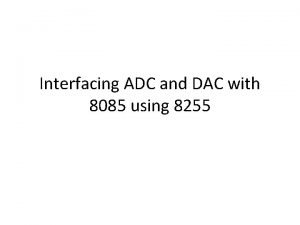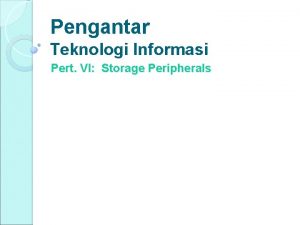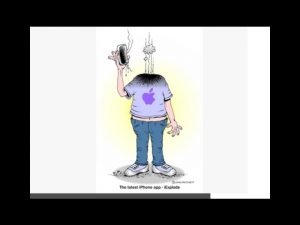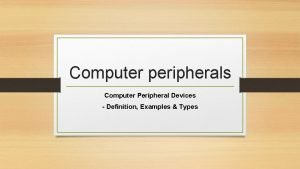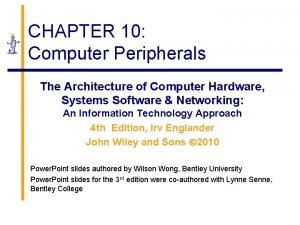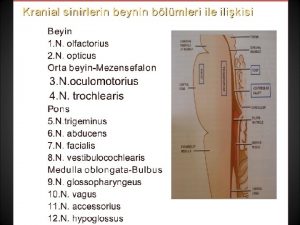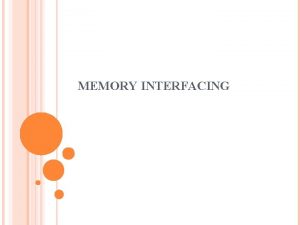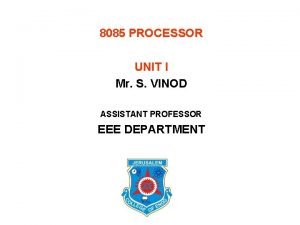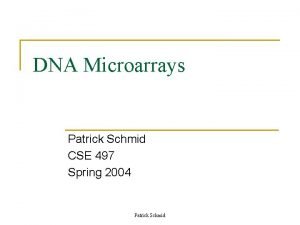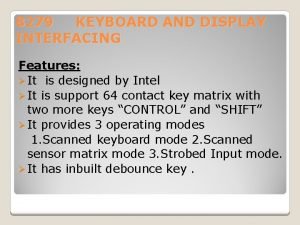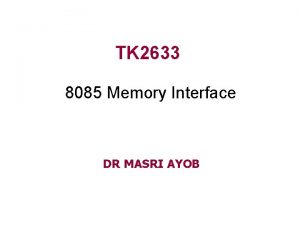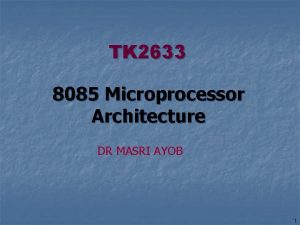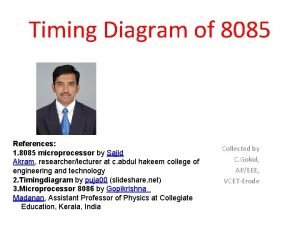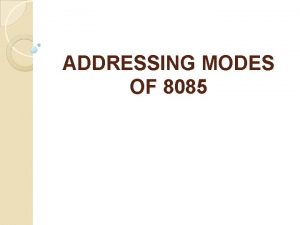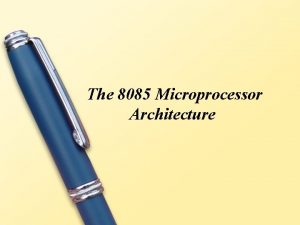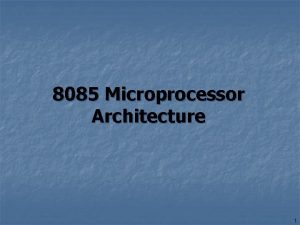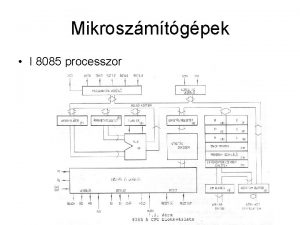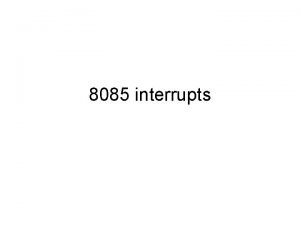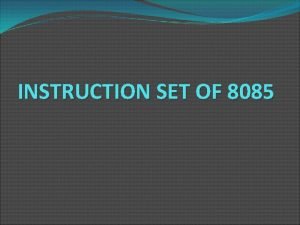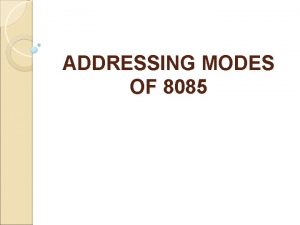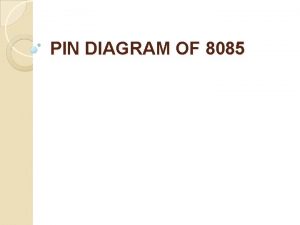TK 2633 8085 IO Peripherals Interface DR MASRI

















- Slides: 17

TK 2633 8085 I/O Peripherals Interface DR MASRI AYOB

I/O Peripherals Interface • The objective of interfacing I/O peripherals: – is to obtain information or results from process. – to store, process or display. • The instructions IN and OUT perform this operation. • The following examples shows the process of instruction: 2050 D 3 OUT 01 H 2051 01 2

3

I/O Peripherals Interface Figure 2 Note: In IO interfacing, only one segment of the address bus (low or high addresses) is sufficient (both segment have same address). 4

I/O Peripherals Interface • Figure 2 shows one of the way to decode address lines to obtain output address 01 H. • The line address A 7 -A 0 is connected to eight NAND gates function as decoder. • The line A 0 is connected directly, A 7 -A 1 are connected through inverter gates. • The G 2 gate is combined with gate G 1 and IO/W control signal to generate select signal I/O whenever both signals are active low. 5

Multiple output address, I/O interface • Figure 2 have shown the technique to decode I/O output address in absolute decoding technique. • There is another technique which is cost saving - partial decoding. • This technique gives the flexibility to user as to use more than one addresses to one output or input device. 6

Multiple output address, I/O interface Figure 3: Partial Decoding 7

Multiple output address, I/O interface • The address lines A 1 and A 0 are unused. • Depending on the logic input given at address lines A 1 and A 0; – the output addresses: 00 h, 01 h, 02 h or 03 h, which refer to the same output device. • The multiple address is normally used in a small system; – OK if those addresses are not being used by any other system, input or output devices. 8

Input Interface Figure 4: IN FFH 9

Input Interface • The assembly instruction for that circuit in fig. 4 is IN FFH. • Note: FFH = 1111 binary • The line address is decoded using NAND gates. • When address A 7 -A 0 is active high (FFH), the output of NAND gate will have an active low signal and then combined with control signals IOR at G 2. • Suppose the μp run the IN FFH instruction, data at DIP switches will be placed at data bus and copied to accumulator. 10

I/O interface using decoder Figure 5 11

I/O interface using decoder • Circuit in figure 5 decode input and output device at once using 3 -to-8 decoder and four input NAND gates. • The address lines A 2, A 1 and A 0 are used as inputs to decoder, and the remaining line address A 7 ke A 3 is used to enable the decoder chip. • The decoder has eight output; therefore we can use the decoder to address eight kind of input and output devices. 12

Seven segment display output interface. Figure 6 13

Seven segment display output interface • Fig 6 shows two different type of 7 -segment display; common cathode and common anode. • 7 -segment display consists of a few LEDs and are arranged physically as shown in figure 7 a. • It has seven segment from A to G that normally connected to data bus D 0 to D 6 respectively. • If decimal point is used, D 7 will be connected to DP; and left unconnected if it is unused. 14

Seven segment display output interface. Figure 7 15

Seven segment display output interface. • Fig. 7 shows the example to interface seven segment display and address decoder with an address of FDH. • The common anode display is used therefore 0 logic is needed to activate the segment. • Suppose to display number 4 at seven segment display, therefore the segment F, G, B and C have to be activated. • Follows are the instructions to execute it: – MVI A, 66 H OUT FDH Data lines: D 7 D 6 D 5 D 4 D 3 D 2 D 1 D 0 1 1 0 NC G F E D C B A Bits: X Segments: = 66 H 16

Thank you Q&A 17
 Dac interfacing with 8255
Dac interfacing with 8255 An interface
An interface Interface in java
Interface in java Office interface vs industrial interface
Office interface vs industrial interface Office interface vs industrial interface
Office interface vs industrial interface Storage peripherals
Storage peripherals Storage peripherals
Storage peripherals Can connect up to 127 different peripherals
Can connect up to 127 different peripherals Examples of peripheral
Examples of peripheral Computer peripherals storage devices
Computer peripherals storage devices Stepper motor interfacing with 8085
Stepper motor interfacing with 8085 8085 programming model
8085 programming model Memory interfacing
Memory interfacing Sim instruction in 8085
Sim instruction in 8085 8085
8085 In decoded scan mode the maximum size of keyboard matrix is
In decoded scan mode the maximum size of keyboard matrix is Disadvantages of servo motor
Disadvantages of servo motor Demultiplexing in 8085 microprocessor
Demultiplexing in 8085 microprocessor
